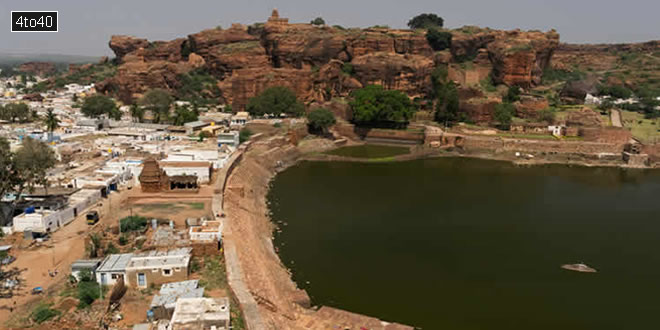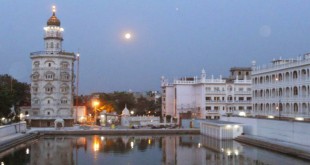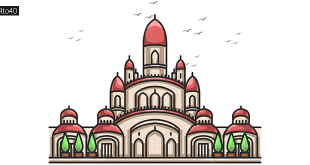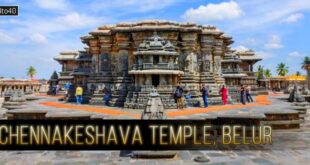भारत देश में ऐसी बहुत सी ऐतिहासिक और प्रसिद्ध गुफाएं हैं, जिनका रहस्य आज तक कोई सुलझा नहीं पाए। आज हम आपको ऐसी ही एक गुफा के बारे में बताने जा रहे हैं जो अपने अंदर कितने रहस्य और सुंदरता को समेटे हुए हैं। इस गुफा के बारे में ज्यादा लोग नहीं जानते हैं कि ये गुफा कहां और कब स्थित हुई। तो चलिए जानते हैं इस प्राचीन और रहस्यमयी गुफा के बारे में –
बता दें कि ये गुफा कर्नाटक राज्य के बागलकोट जिले में बादामी नामक शहर में है, जिसे बादामी गुफा के नाम से जाना जाता है। माना जाता है कि ये गुफा भारत के सबसे पुरानी गुफाओं में से एक है, जिसका निर्माण 6वीं सदी में चालुक्य वंश द्वारा किया गया था। कहा जाता है यहां की सभी गुफाएं नगारा और द्रविड़ शैली में बनवाई गई थी। यही कारण है कि गुफाएं देखने में बहुत ही सुंदर दिखती हैं। बल्कि कहा जाता है कि ये गुफाएं अपनी सुंदर नक्काशियों के लिए ही देशभर में जानी जाती हैं। यहां की सभी गुफाएं नगारा और द्रविड़ शैली में बनवाई गई थी। इस शैली में बनाने के कारण यहा की सभी गुफाये बहुत ही सुन्दर दिखती है। यहां गुफा मंदिर अपनी सुंदर नक्काशियों के लिए जाने जाते हैं।
गुफाओं से जुड़ी धार्मिक कथा
यहां चार गुफा मंदिर हैं जिनमें से पहला गुफा मंदिर सबसे प्राचीन मंदिर है, जिसका निर्माण 6वीं शताब्दी में हुआ था। इस मंदिर में भगवान शिव के अर्धनारीश्वर और हरिहर अवतार की नक्काशियां की गई हैं और इन नक्काशियों के साथ ही भगवान शिव का तांडव नृत्य की भी नक्काशी दिखाई देती है। इसके दाहिनी तरफ़ भगवान शिव का हरिहर रूप और बाईं तरफ भगवान विष्णु का अवतार हैं। दर्शन करने आए दर्शनार्थी को यहां भगवान शिव के साथ-साथ महिषासुर मर्दिनी, गणपति, शिवलिंगम और शन्मुख की मूर्तियां के भी दर्शन करने को मिलते हैं। इसके अलावा दूसरा गुफा मंदिर भगवान विष्णु को समर्पित है, जहां विष्णु वराह और त्रिविक्रम अवतार में यहां स्थापित हैं। वहीं तीसरी गुफा मंदिर में भगवान विष्णु त्रिविक्रम और नरसिंह अवतार हैं, बता दें कि ये 100 फुट गहरा है। चौथा गुफा मंदिर जैन धर्म को समर्पित है। जहां भगवान महावीर बैठी अवस्था में विराजमान हैं, इनके साथ ही गुफा में तीर्थकर पार्श्वनाथ का चित्र भी बना हुआ है। मंदिर की छत पर पुराणों के दृश्य दिखाए गए हैं इसमें श्रीहरि का गरुड़ अवतार दिखाया गया है।
The Badami cave temples are a complex of temples located at Badami, a town in the Bagalkot District in the north part of Karnataka, India. They are considered an example of Indian rock-cut architecture, especially Badami Chalukya Architecture. Badami, the capital of the Early Chalukyas, who ruled much of Karnataka in the 6th to 8th centuries, lies at the mouth of a ravine with rocky hills on either side and a town tank in which water from the ravine flows. The town is known for its ancient cave temples carved out of the sandstone hills above.
The Badami cave temples are composed of four caves, all carved out of the soft Badami sandstone on a hill cliff in the late 6th to 7th centuries. The planning of four caves is simple. The entrance is a verandah (mukha mandapa) with stone columns and brackets, a distinctive feature of these caves, leading to a columned mandapa – main hall (also maha mandapa) and then to the small square shrine (sanctum sanctorum, garbhaghrha) cut deep into the cave. The temple caves represent different religious sects. Among them, two (cave 2 and 3) are dedicated to god Vishnu, one to god Shiva (cave 1) and the fourth (cave 4) is a Jain temple. The first three are devoted to the Vedic faith and the fourth cave is the only Jain temple at Badami. The cave temples date back to 600 and 700 CE. Their architecture is a blend of North Indian Nagara Style and South Indian Dravidian style. As described above each cave has a sanctum sanctorum, a mandapa, a verandah and pillars. The cave temples also bear exquisite carvings, sculptures and beautiful murals. Important part of historical heritage at Badami cave temples are inscriptions in old Kannada script. There is also the fifth cave temple in Badami – Buddhist temple in natural cave which can be entered only on all fours.
 Kids Portal For Parents India Kids Network
Kids Portal For Parents India Kids Network







